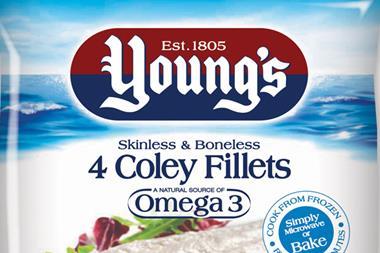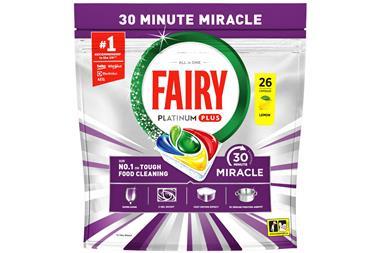
Professor Elliott’s review into the UK food system today delivered some harsh home truths for the food industry and its grasp on food crime, but it also highlighted several examples of excellence and best practice.
Despite concluding overall that an urgent culture change in relation to food crime was needed, Elliott said his review had highlighted many examples of good practice, which had left him optimistic for the future of the industry and its ability to protect consumers from fraudsters.
In particular, Elliott said he had been impressed with Morrisons’ integrated fresh beef supply chain, “which not only helps assure integrity but also minimises waste”; McDonald’s supply chain for beef patties, which he described as “a fine example of a short supply chain that values long-term commercial relationships”; and Young’s Seafood’s approach to horizon scanning to identify emerging risks in the fish sector (known as the ‘Seven Sins of Fish’, see below) and its “rigorous programme” of analytical testing.
‘Dubious’ meat still in supply chain, Elliott report warns
Risky animal by-products could get into UK food chain: Elliott
“I would welcome the opportunity to explore the supply chains of other food businesses during the second part of my review,” Elliott said.
Asda also received a positive mention in the report for its decision earlier this year to move from announced to unannounced BRC supplier audits.
Elliott’s report argues for more robust and streamlined auditing and inspection regimes, and recommends unannounced audits become the industry norm. This would allow the overall number of audits and inspections to be reduced, cutting unnecessary duplication and the burden on suppliers and producers. Elliott is also recommending that third-party auditors and accreditation bodies expand their activities to take food samples for analytical testing during unannounced audits.
The Asda move to unannounced audits had been welcomed by suppliers, who had found they saved time previously invested in preparing for announced audits, the report said. “Asda is the exception rather than the rule, however, and the vast majority of third-party and retailer audits are still undertaken on an announced basis.”
Young’s Seafood Limited - ‘Seven Sins of Fish’:
| Form of Fraud | Mitigating measures to prevent it |
|---|---|
| Species substitution; substitution of a higher value species e.g. cod, for a lower value species e.g. whiting. Often used in situations where organoleptic identification may be difficult e.g. smoked fish. | Species testing through various methods, including gel electrophoresis or DNA testing. |
| Fishery substitution; labelling and selling seafood from a different fishery to where it was caught e.g. substituting fish from a well-managed, abundant fishery for one from a depleted fishery with poor market perception. | Mitigation is mainly based on auditing requirements, but is developing a more forensic approach, including DNA analysis to population level. |
| Illegal, Unrecorded, Unregulated (IUU) substitution; all or some of the fish is from IUU fisheries e.g. some fish may have been caught over-quota or under-sized. | This is difficult to detect and no empirical testing is available, as illegal fish is morphologically and genetically identical to the legal catch. Mitigation is based on auditing, again developing a more forensic approach. |
| Species adulteration; adding non-declared, non-specified species to a primary processed raw material product e.g. adding lower value species to a high value frozen fish block. | DNA testing to check for other fish species within the material and carbohydrate or fibre testing to check for vegetable based compounds within the material (to detect where non-fish protein may have been added). |
| Chain of custody abuse; substituting or adding fish from an uncertified fishery into a product with independent certification e.g. adding non-certified fish to a product with Marine Stewardship Council certification. | Mitigation is mainly based on auditing, although DNA analysis is available for some species. However, this testing cannot determine between certified and uncertified material from the same fishery. |
| Catch method fraud; mis-describing the catch method of a fish e.g. describing trawler caught fish as line caught. | There are no tests available to determine method of catch, but where head and skin of fish remain intact and seafood specialist can determine method of catch, albeit subjectively. Mitigation is based on auditing. |
| Undeclared product extension; use of technology to enhance the ability of fish muscle to retain water e.g. using soak and injection processes to reduce the analytical fish content of a piece of fish. | A number of tests are used to mitigate against this, including: moisture testing, to determine abnormal levels of moisture, nitrogen testing to determine the analytical fish content, pH testing to determine the use of binders and additional tests for phosphates, sodium and chloride. |



















No comments yet